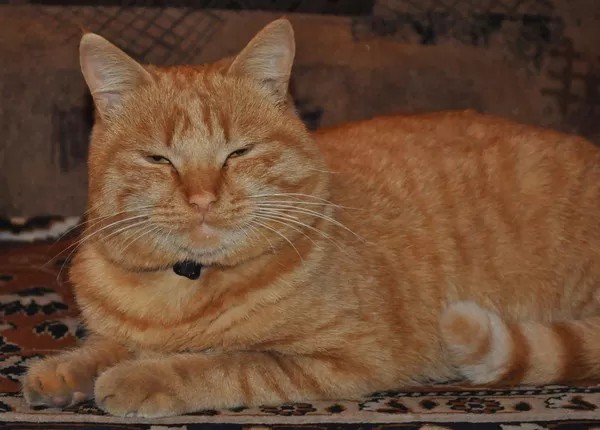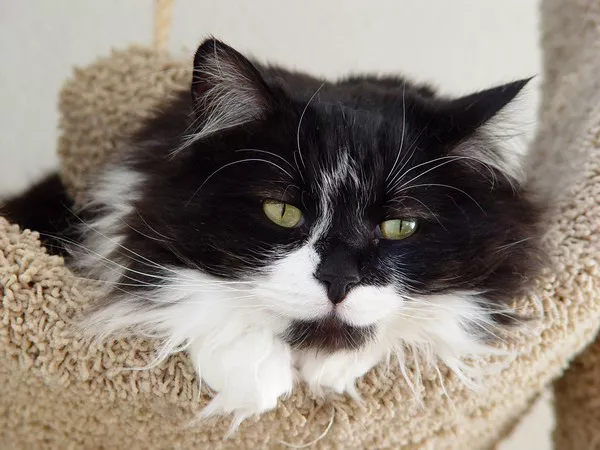Ensuring your cat maintains a healthy weight and robust health is a primary concern for many pet owners. While “fat” might imply unhealthy weight gain, in this context, we mean helping your cat reach a healthy and optimal weight, especially if they are underweight or have specific health issues. This article will provide a detailed guide on how to make your cat healthy and fat through proper nutrition, exercise, and healthcare practices.
Understanding Your Cat’s Nutritional Needs
Balanced Diet
A balanced diet is crucial for your cat’s health. Cats are obligate carnivores, meaning they require a diet high in animal-based proteins. This protein is essential for maintaining muscle mass and supporting various bodily functions.
Essential Nutrients
Ensure your cat’s diet includes the following essential nutrients:
Protein: Vital for muscle maintenance and repair.
Fats: Provide a concentrated source of energy and essential fatty acids.
Vitamins and Minerals: Necessary for various metabolic processes.
Taurine: An amino acid critical for heart and eye health.
Choosing the Right Food
High-Quality Commercial Cat Food
Opt for high-quality commercial cat food that lists meat as the primary ingredient. Look for foods that meet the standards set by the Association of American Feed Control Officials (AAFCO). Both wet and dry foods have their benefits; wet food is excellent for hydration, while dry food can be beneficial for dental health.
Specialty Diets
Consider specialty diets if your cat has specific health needs. For instance, high-calorie foods are available for underweight cats or those recovering from illness. Consult your veterinarian to choose the right diet for your cat’s specific conditions.
Homemade Diets
While homemade diets can be tailored to your cat’s needs, they require careful planning to ensure nutritional adequacy. Consult with a veterinary nutritionist before starting a homemade diet to avoid nutrient deficiencies.
Feeding Strategies
Regular Meal Times
Establish regular feeding times to help regulate your cat’s metabolism and ensure consistent nutrient intake. Most cats thrive on two to three meals per day, but some may benefit from free-feeding, where food is available at all times.
Portion Control
Monitor portion sizes to avoid overfeeding. Use the feeding guidelines on the cat food packaging as a starting point, and adjust based on your cat’s weight and activity level.
Treats and Supplements
Use treats sparingly to avoid excessive calorie intake. When needed, high-calorie treats or supplements can help boost your cat’s weight in a controlled manner. Always choose treats that are nutritionally balanced and suitable for cats.
Enhancing Appetite
Palatable Food Choices
Choose foods that are highly palatable to encourage eating. Wet foods often have stronger aromas and flavors, which can entice picky eaters.
Warming Up Food
Warm your cat’s food slightly to enhance its aroma. Warmed food can be more appealing, especially for older cats or those with diminished senses.
Variety and Rotation
Introduce a variety of foods to prevent your cat from becoming bored with their diet. Rotate between different flavors and types of food while ensuring they meet nutritional requirements.
Hydration is Key
Importance of Water
Proper hydration is crucial for your cat’s health, particularly for their urinary and kidney function. Ensure your cat has access to fresh water at all times.
Wet Food Benefits
Incorporate wet food into your cat’s diet to increase their water intake. Wet food has a higher moisture content, which can help keep your cat hydrated.
See Also: When Do Ragdolls Go into Heat?
Water Fountains
Consider using a cat water fountain. Many cats prefer running water, and fountains can encourage them to drink more.
Exercise and Enrichment
Regular Exercise
Encourage regular exercise to maintain your cat’s muscle mass and overall health. Interactive toys, laser pointers, and feather wands can help keep your cat active and engaged.
Environmental Enrichment
Provide environmental enrichment to stimulate your cat’s mind and body. Scratching posts, climbing trees, and puzzle feeders can make your cat’s environment more stimulating and enjoyable.
Playtime Routine
Establish a daily playtime routine to ensure your cat gets adequate exercise. Play sessions can also strengthen the bond between you and your cat.
Health Check-ups
Regular Veterinary Visits
Schedule regular veterinary check-ups to monitor your cat’s health and address any potential issues early. Your vet can provide personalized advice on diet and care.
Vaccinations and Parasite Control
Keep your cat up to date with vaccinations and parasite control measures. Healthy cats are more likely to maintain a healthy weight.
Weight Monitoring
Regularly monitor your cat’s weight and body condition. Adjust their diet and exercise regimen as needed to maintain an optimal weight.
Addressing Health Issues
Underlying Health Conditions
Identify and address any underlying health conditions that may affect your cat’s weight. Conditions like hyperthyroidism, diabetes, and gastrointestinal issues can impact your cat’s ability to gain weight.
Medication and Treatment
Follow your veterinarian’s recommendations for any necessary medication or treatment plans. Proper management of health issues is essential for maintaining a healthy weight.
Managing Stress and Anxiety
Stress Reduction
Minimize stress in your cat’s environment. Stress can affect appetite and overall health. Provide a calm, safe space for your cat to retreat to when needed.
Comfort and Security
Ensure your cat feels secure and comfortable in their environment. Consistent routines and familiar surroundings can help reduce anxiety.
Special Considerations for Kittens and Senior Cats
Kittens
Kittens require more calories and nutrients than adult cats due to their rapid growth. Provide high-quality kitten food that meets their nutritional needs and feed them multiple times a day.
Senior Cats
Senior cats may have different nutritional needs and might benefit from senior-specific diets. These diets often contain higher levels of easily digestible proteins and nutrients to support aging bodies.
Monitoring Progress
Regular Weigh-Ins
Weigh your cat regularly to track their progress. Use a pet scale or a regular scale by holding your cat and subtracting your weight.
Body Condition Score
Learn to assess your cat’s body condition score (BCS). This score helps you determine if your cat is underweight, overweight, or at an ideal weight. Your veterinarian can show you how to perform a BCS assessment.
Adjusting Diet and Exercise
Based on your cat’s progress, adjust their diet and exercise routine as needed. Continue to monitor and make changes to ensure they reach and maintain a healthy weight.
Conclusion
Maintaining a healthy weight for your cat is a vital part of ensuring their overall well-being. By providing a balanced diet, encouraging regular exercise, and monitoring their health, you can help your cat achieve and maintain an optimal weight. Always consult with your veterinarian for personalized advice and support, as they can provide valuable insights tailored to your cat’s specific needs. With the right care and attention, you can ensure your cat remains healthy, happy, and thriving for years to come.

























